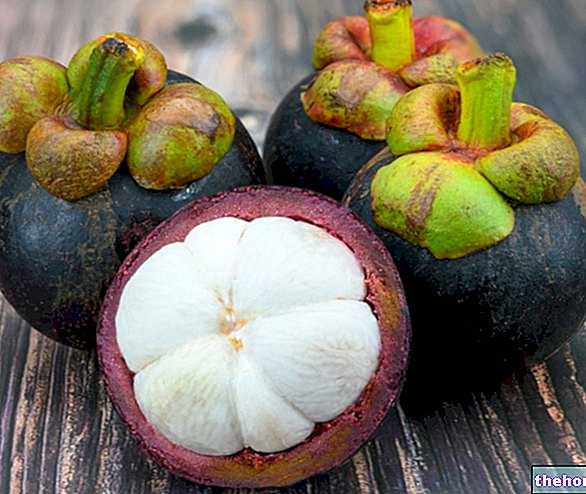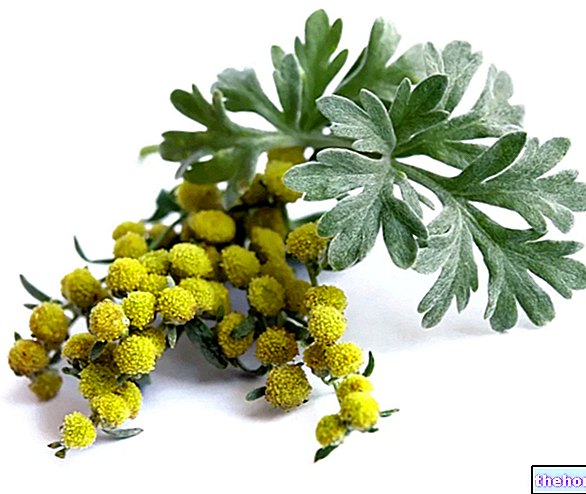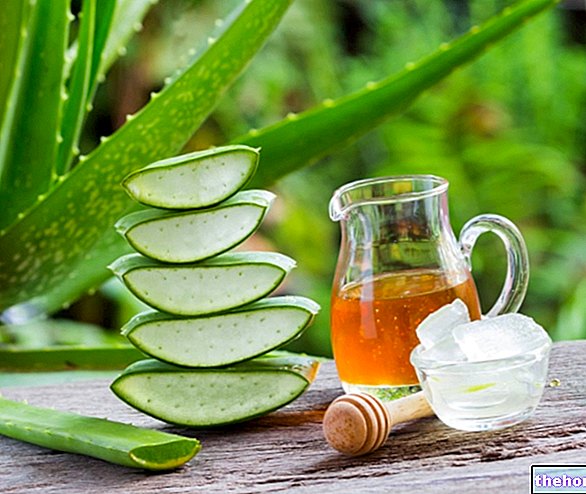For further information: Properties of Aloe: what are they? and appropriate processing, gives rise to the drug of the same name.

Among the main chemical constituents of aloe juice, anthraquinone derivatives such as aloin (or barbaloin) and aloe-emodin stand out, responsible for the laxative action that the juice can exercise if taken orally (this use, as will be seen later, it is no longer allowed).
Properties and Mechanism of Action
The anthraquinone derivatives contained in aloe are considered to be directly responsible for the laxative properties of which the juice is endowed. Going into more detail, these are molecules which, chemically speaking, are considered derivatives of hydroxyanthracene.
Typically, anthraquinones are found in the form of glycosides (anthraquinone glycosides, precisely), ie in the form of compounds characterized by the presence of a sugary part known as "glycone" and a non-sugary part called "aglycone" (in this case, the "aglycone consists of an anthracenic derivative) .
It is thanks to the glycosidic form that these compounds, once ingested, are able to cross both the stomach and the small intestine without undergoing modifications, and then reach the large intestine where, instead, they are transformed thanks to the action of the flora. bacterial in the respective aglycones. The latter therefore exert a stimulating-irritative action, characterized by an increase in intestinal motility with a consequent decrease in the absorption of water and electrolytes.
Since the anthraquinone glycosides must pass through a large part of the gastrointestinal tract before they can exert their action, the laxative effect is not immediate, but occurs after 6-12 hours.
Side Effects and Contraindications
Among the most common side effects caused by the intake of aloe juice we find: cramps and abdominal pain and diarrhea. High doses can lead to electrolyte imbalances and hypokalaemia, atonic colon, aggravation of constipation, colon melanosis and psychological dependence.
As for the contraindications, however, aloe juice should not be taken in the presence of gastrointestinal diseases and disorders (intestinal obstruction, appendicitis, inflammatory pathologies of the enteric tract, etc.), during pregnancy, during breastfeeding and in children.
In any case, in April 2021 a new European regulation came into force that prohibits the marketing of foods and food supplements containing aloe-emodin, emodin and aloe-based preparations containing hydroxyanthracenic derivatives, due to the potential health hazards highlighted by the studies conducted so far in this regard.
Deepening: New European Regulation of 18 March 2021
On April 8, 2021, the ban on marketing foods and food supplements containing hydroxyanthracenes and their derivatives, a family of molecules contained in various plants, such as aloe, cassia, rhubarb and senna, came into force.
More in detail, the new European Regulation of March 18, 2021 - which came into force, precisely, April 8, 2021 - modifies Annex III of Regulation (EC) No. 1925/2006 of the European Parliament and of the Council to as regards the botanical species containing hydroxyanthracene derivatives.
The full text can be consulted by clicking here. However, we can summarize the main points as follows:
- The following are added to the list of substances whose use in food is prohibited (Annex III part A of the aforementioned regulation):
- Aloe-emodin and all preparations in which this substance is present;
- Emodin and all preparations in which this substance is present;
- Preparations based on leaves of Aloe species containing hydroxyanthracene derivatives;
- Dantrone and all preparations in which this substance is present.
- The following are added to the list of substances whose use in food is subject to Community surveillance (Annex III part C):
- Preparations based on the root or rhizome of Rheum palmatum, Rheum officinaleBaillon and their hybrids containing hydroxyanthracene derivatives;
- Preparations based on leaves or fruits of Cassia senna containing derivatives of hydroxyanthracene;
- Preparations based on bark of Rhamnus frangula or Rhamnus purshianaA.D. containing derivatives of hydroxyanthracene.
Uses and Properties
Aloe gel can be included in the composition of various food and beverage supplements, but it is particularly appreciated in the cosmetic field.
In fact, thanks to its healing and anti-inflammatory properties exercised following topical application, aloe vera gel is very successful in the treatment of burns, burns and erythema. On the market it is possible to find both aloe gel as it is (generally with added substances with a preservative action in order to prevent its degradation), and various types of cosmetics that contain it (for example, face and body creams, sun creams, body cleansers, shampoos, face masks, etc.).
Side Effects and Contraindications
Aloe gel taken orally not purified from anthraquinone derivatives can cause gastrointestinal irritation. Furthermore - even when deprived of anthraquinones - the possible onset of allergic reactions in sensitive individuals cannot be excluded.
Aloe gel applied externally, on the other hand, could cause contact dermatitis.
As for the contraindications, there are none known when the gel is used externally, except for cases of known allergy to one or more components.Internal use, on the other hand, in addition to not being able to be used in case of known allergy to one or more components, is not recommended during pregnancy, breastfeeding and children.
Other articles on "Aloe"
- Aloe
- Aloe: properties of Aloe
- Aloe in Herbalist: properties of Aloe
- Aloe vera - Therapeutic indications
- Aloe gel
- Aloe juice
- Aloe juice: side effects
- Aloe Vera - Botanical Description, Chemical Composition









.jpg)


















